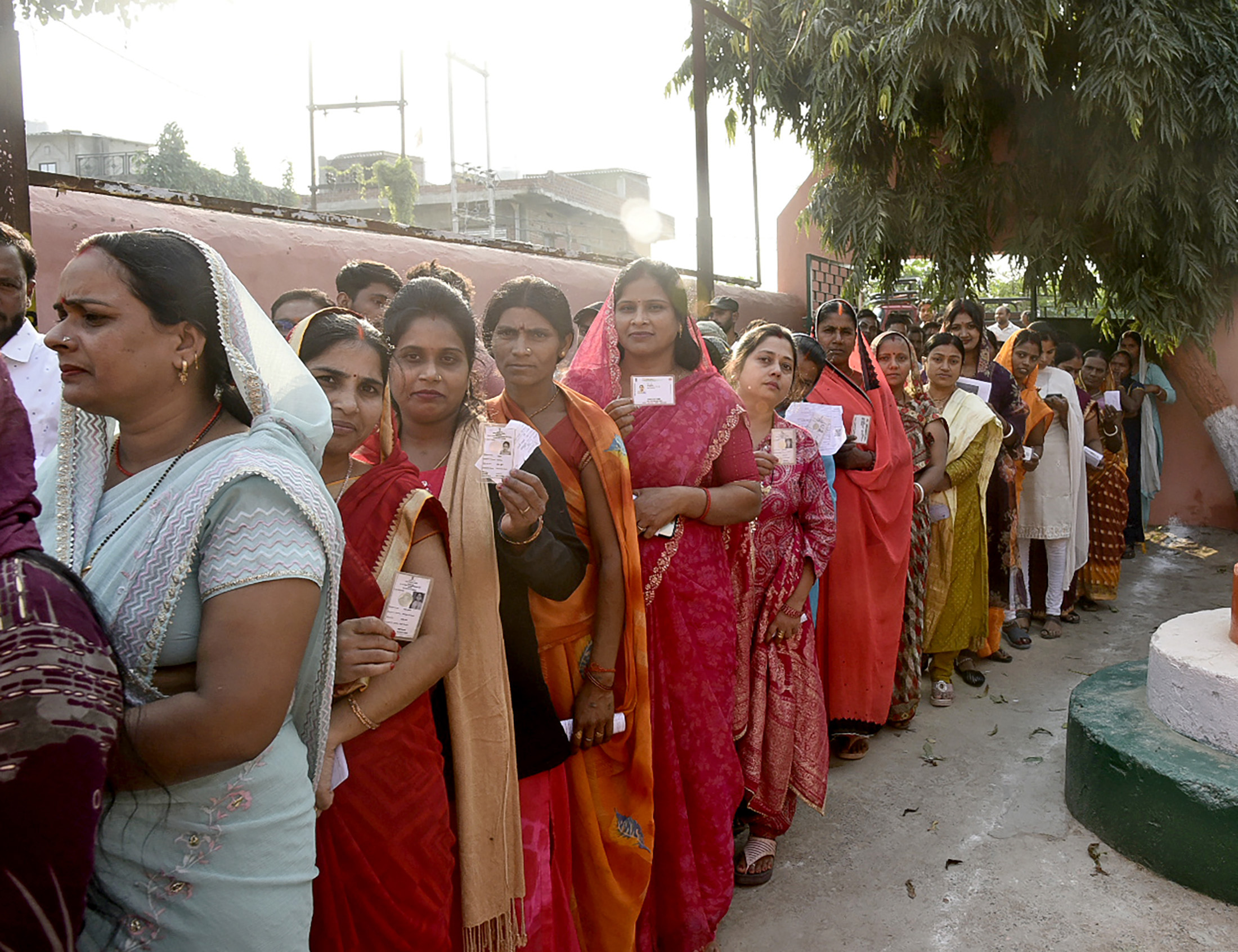
Patna: Bihar’s two-phased Assembly Election concluded on 11 November, setting a new historical record for voter turnout at approximately 66.91 per cent, the highest since the state’s first election in 1951. An analysis of the provisional data reveals that the surge in participation was overwhelmingly led by women, whose turnout significantly outpaced that of men, a crucial factor shaping the outcome of the polls.
The most striking feature of the 2025 election is the extraordinary participation of female electors. The Election Commission of India (ECI) data shows that approximately 71.6 per cent of registered women voters cast their ballots, compared to just 62.8 per cent of men. This remarkable 10 percentage point gap marks the largest gender difference in the state’s electoral history and is considered the primary engine behind the overall record turnout.
Political analysts attribute this surge to the successful targeting of women as a key electoral constituency. Both the ruling and opposition alliances focused intensely on women-centric issues, including welfare schemes, cash transfers, law and order, and the delivery of basic services such as education and health. The high participation is widely interpreted as a reflection of women’s increased political awareness and their motivation to vote on issues that directly impact their daily lives.
The logistical and administrative efforts of the Election Commission also played a vital role in facilitating this high turnout. The ECI’s “Bihar First” initiatives focused on improving voter convenience, transparency, and security.
A key technical factor in the high percentage figure was the ECI’s Special Intensive Revision (SIR) process, which led to the deletion of several million ineligible or duplicate names from the electoral roll, thereby cleaning the voter list and raising the effective turnout percentage. Furthermore, the ECI implemented measures such as reducing the maximum number of voters per polling booth and providing 100 per cent live webcasting at all polling stations. These steps, coupled with extensive security arrangements, ensured a largely peaceful election with no reported re-polls, creating an environment of trust that encouraged widespread participation.
The highly competitive nature of the election, which pitted the incumbent National Democratic Alliance (NDA) against the resurgent Mahagathbandhan, energized party cadres and voters alike. The debate centred on critical state issues like persistent unemployment, large-scale migration, and inflation, prompting high engagement across various demographic segments, including the youth.
Regionally, areas like Seemanchal, which went to the polls in the second phase, recorded some of the highest district-level turnouts, suggesting intense electoral battles in these politically crucial pockets.
The final results, scheduled for counting on November 14, will determine whether this historic turnout signifies a pro-incumbency endorsement of welfare policies, a yearning for change among the youth, or a complex mix of both.

